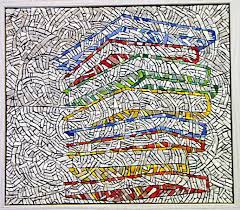Phonics – An Essential Building Block in the Reading Process

In a previous post about phonemic awareness, I discussed the importance of emergent reader’s understanding of phonemes or sounds in words. As children develop strong phonemic awareness skills, they need to begin to associate the sounds in words to letters or graphemes. The relationship between sounds and letters is called phonics.
Phonics is an essential building block in the reading process. Without learning to associate the phoneme with the grapheme, reading cannot occur. For fluent readers, phonics seems almost common sense, however, there is no natural connection between sounds and letters. Phonics cannot be learned through osmosis but instead must be explicitly taught.

Phonics is particularly important for emergent readers. Beginning around the age of 5, children should have daily explicit phonics instruction. Like many reading skills, some children may need only minimum exposure to a letter to connect the associated sound. Other children may need repeated and constant exposure to a letter to become automatic in connecting the correct sound. If your child is older and still struggling with letter-sound relationships, they can still benefit from phonics instruction. Every child must know the names and sounds of all the letters in the alphabet to become a good reader.
Here are a few ways that you can practice phonics skills with your child at home to help increase their reading proficiency:
- Word Building: Using letter cards or Scrabble tiles, have your child build words. Encourage your child to first segment the sounds orally and then use the corresponding letter card to build the word and blend it back together. Talk with your child’s teacher or reading tutor to find out appropriate words to work on.
- Letter Sound Practice: Make flash cards of letters or spelling patterns and quiz your child on them. For a list of appropriate spelling patterns talk with your child’s reading clinician or teacher.
- Race to Build a Word: Draw 7 consonants and 2 vowels from a stack of letter cards. Challenge your child to a race to see who can build the most words in 3 minutes. To make this more challenging use digraphs. Digraphs are two adjacent letters in the same syllable that represent a single speech sound. Some examples of consonant digraphs are (sh, ch, th, etc.). Vowel digraphs often called vowel team examples such as ( ee, ea, ay, ai, etc.) will add a higher level of practice . Check with your child’s teacher or reading tutor to see which digraphs are appropriate for your child’s level.
- Slap A Letter: Create a game board of letters and digraphs that your child is working on using butcher paper or poster board. Give your child a fly swatter. Call out a sound and have your child slap the appropriate spelling pattern with their fly swatter.
- Writing Practice: Say sounds and have your child write the appropriate grapheme. Say words and have your child segment the sounds and spell the words. Encourage your child to tell you how many sounds are in a word and identify any instances where two letters make one sound (like ck, sh, ay, etc.). Always ask your child to segment before writing and read the word when they are done.

These activities will help your child develop the phonics skills necessary to become a fluent reader. If you have an older child who struggles with reading, you may consider trying some of these to find out if phonics is an area they struggle.
If your child struggles with this foundational skill, it is imperative that you get them help from a reading specialist with training in structured literacy. Without explicit phonics instruction, it is unlikely that students with reading difficulties will increase their reading proficiency. If your child struggles, the best thing you can do as a parent is get them help as early as possible.
In our online tutoring program, our trained clinicians systematically and thoroughly teach phonics concepts to ensure that children master reading and writing. We also encourage parents to work with their children at home and provide many resources for you to use to help your child. If you are worried about your child’s reading, call us today to discuss your needs and learn how online tutoring with systematic phonics instruction can help your child succeed.
Look for more reading tips and tricks coming soon. If you are concerned about your child’s reading, call us today to set up a screening and find out if our online tutoring program is the right fit for your child.
Becky Welsch
RW&C, LLC
Becky Welsch has a Master’s degree in K-8 Education. She is certified to teach in the state of Arizona and has special endorsements in the areas of English Language Learners and Reading. Becky has worked with struggling readers in the primary as well as secondary grades. Her experience also includes intensive reading intervention both in person as well as with online teletherapy. Becky has experience with early literacy skills like phonics and phonemic awareness development. She has used several structured literacy programs including Language! and Spalding phonics. She is also trained to administer DIBELS tests and has worked with the DIBELS Next reading remediation program.

0 Comments on “Phonics – An Essential Building Block in the Reading Process”